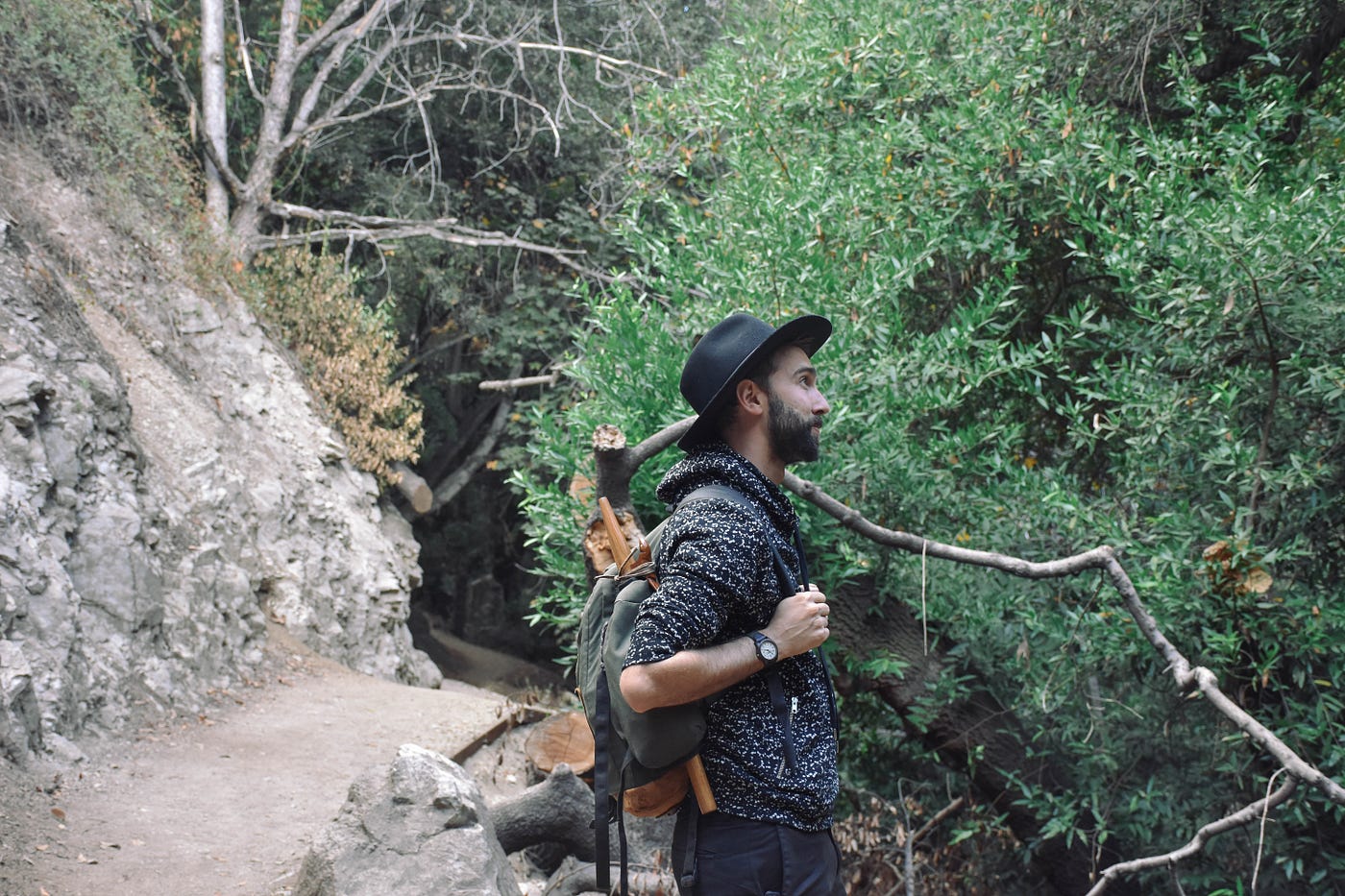
We’ve come to an opening in the Monrovia Canyon trail. A bed of fallen leaves pads the ground, and the air smells of subtle decay. Ben Page, my guide, invites me to let the forest be my guide.
I am skeptical. As an avid hiker, I already spend considerable time with nature, and I’m not entirely sure what this therapy session will involve. Page instructs me to close my eyes, turn around in a circle, open them whenever I feel like it “and just follow where the forest takes you.”
I figure I have nothing to lose. I hear a rustle in the trees and decide to let that be my cue. Up ahead in the trees is a baby squirrel chewing on an acorn. I stare for 10 minutes as it balances itself on a fragile platform. A couple of hikers look at me quizzically — a lone girl staring up at a tree. My focus is immediately broken. I smile at them and cross my arms together, pretending to be waiting for someone.
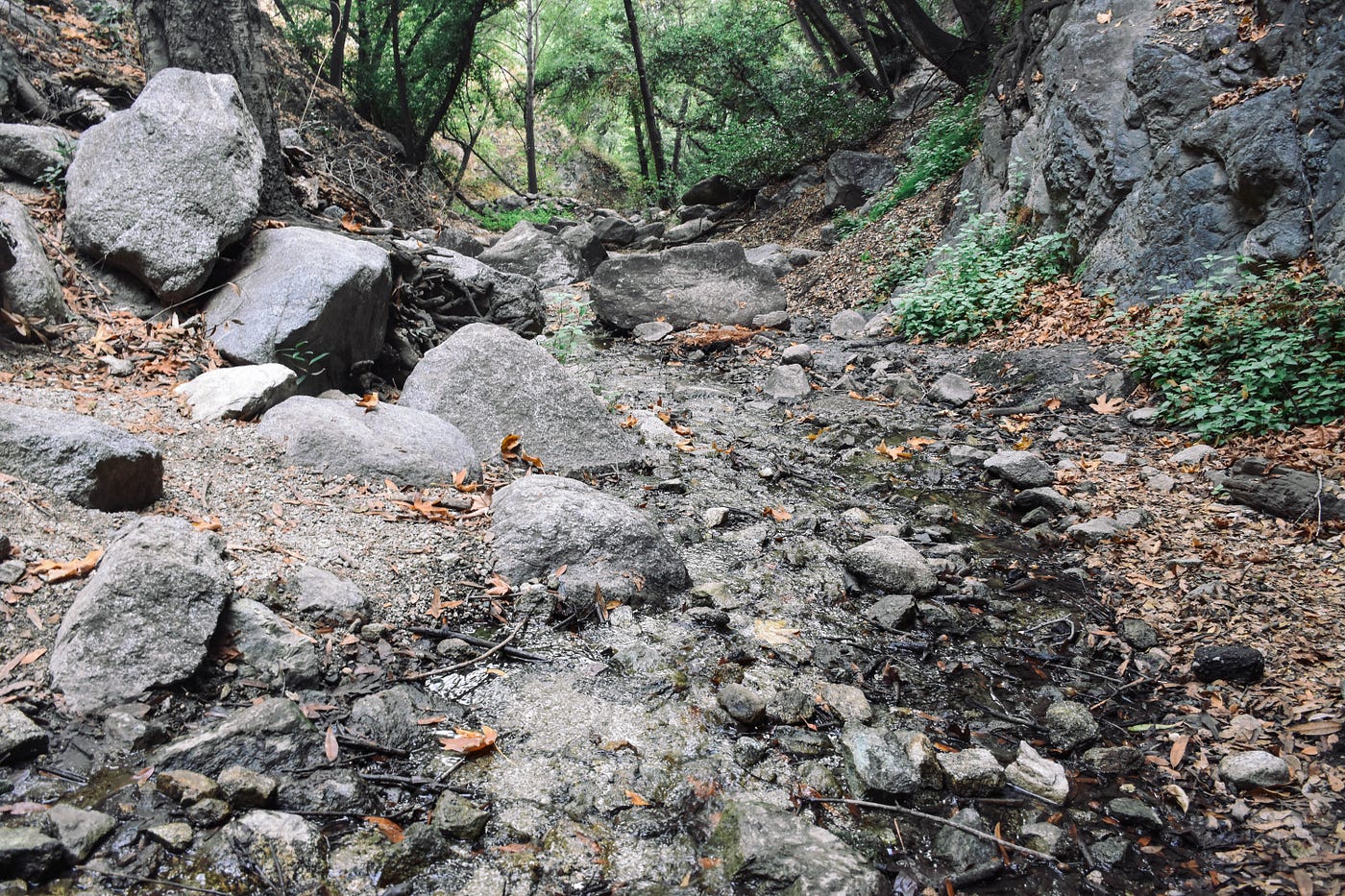
In our culture, an idle person is a weird person.
Eventually, Page surfaces from his corner of the forest.
“So what did you see?” he says, smiling.
Page is a certified forest-therapy guide and the founder of Shinrin Yoku LA. Today I am on a private forest-therapy session. Also known as forest bathing, Shinrin Yoku is a therapy practice that originates from Japan, where doctors prescribe forest-walking sessions, and specific trails are certified for their phytoncides (essential wood oils), like α-Pinene and limonene, which are said to help with stress levels.
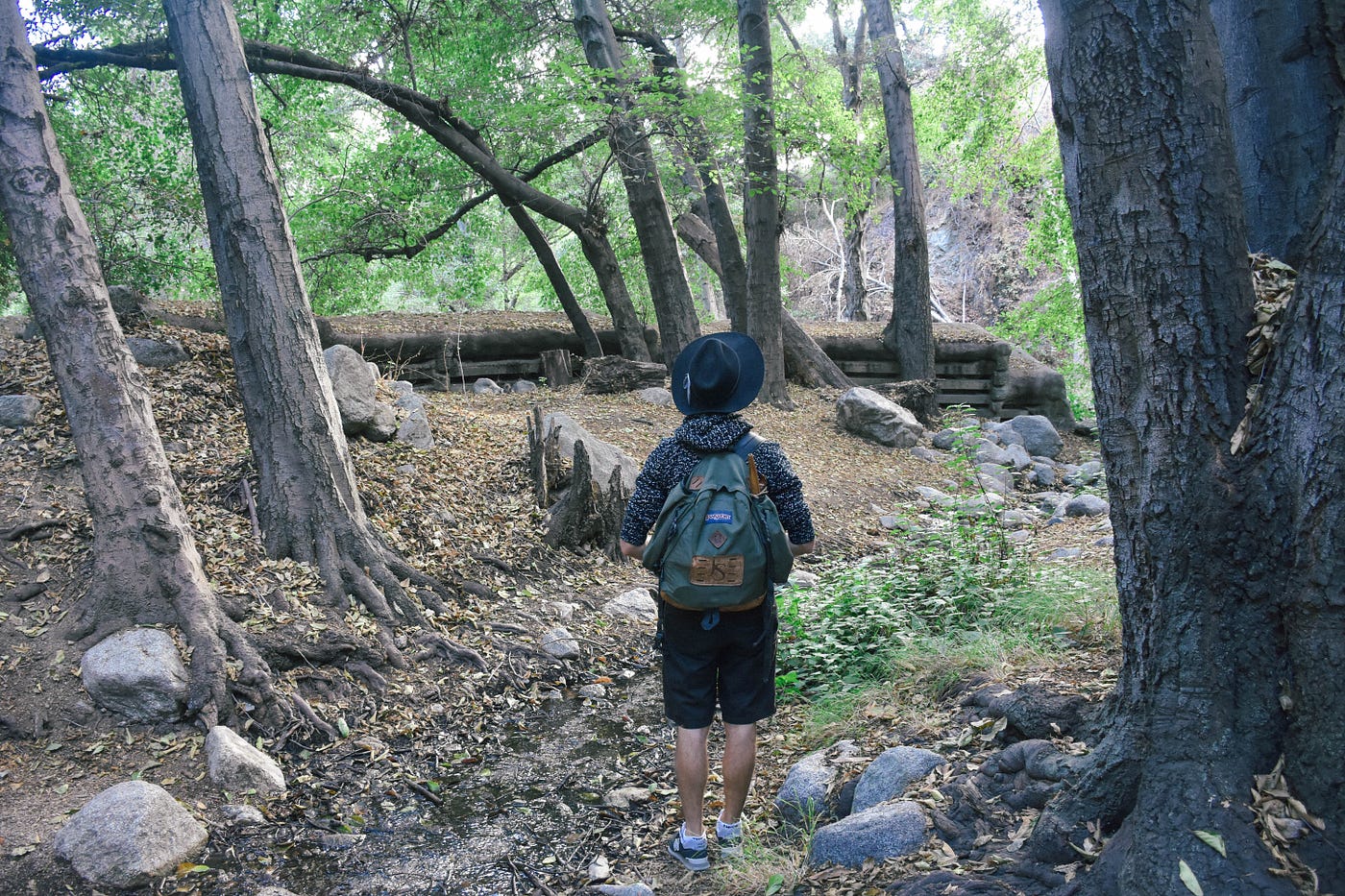
In the States, the practice has been adapted by the Association of Nature and Forest Therapy into guided meditation sessions. It’s a movement that started in Northern California, and Page is the first guide in Southern California. The sessions are three to four hours long and cover just a half mile.
I get it. Spending time in nature is good for one’s health. There’s absolutely no doubt about that. But why is a guide necessary? Is this a cult thing? Another hippie Californian trend that will be mocked on SNL in years to come?
Page laughs when I bring this up.
“Please don’t call me a hippie. Nothing against hippies, but I don’t really find myself following that path,” he says.
During the session, I am invited to participate in exercises like paying attention to moving objects in the forest and taking in the sounds of the woods. Forests, I realized, are not particularly quiet places. They are layered with many noises: the wings of birds and their frenetic songs, the insects, the sounds of leaves crunching on the ground. I am instructed to sit by the creek and ponder a question that has been in my mind. We end the session with tea steeped from foraged bay leaves.

Soon I realize the utility of having Page with me. I don’t know how to calm down, even in an environment as naturally tranquil as the woods. Whereas a hike’s purpose is to reach a destination, a Shinrin Yoku teaches participants how to slow down. Like a guided meditation, it gives people instructions on how to relax.
“As a culture, we’ve lost our connection with nature, and a guide can really help with that,” says Amos Clifford, founder of the Association of Nature and Forest Therapy.
I notice things I’ve never noticed before: the way a forest smells, the invasive fig trees, a pair of dead insect wings in the middle of a spider web. And because we move at such a slow pace, with frequent stops, there are noticeably more animals around. Page says he often sees bears and deer on his walks — things I have never seen in my decades as a Southern Californian hiker.
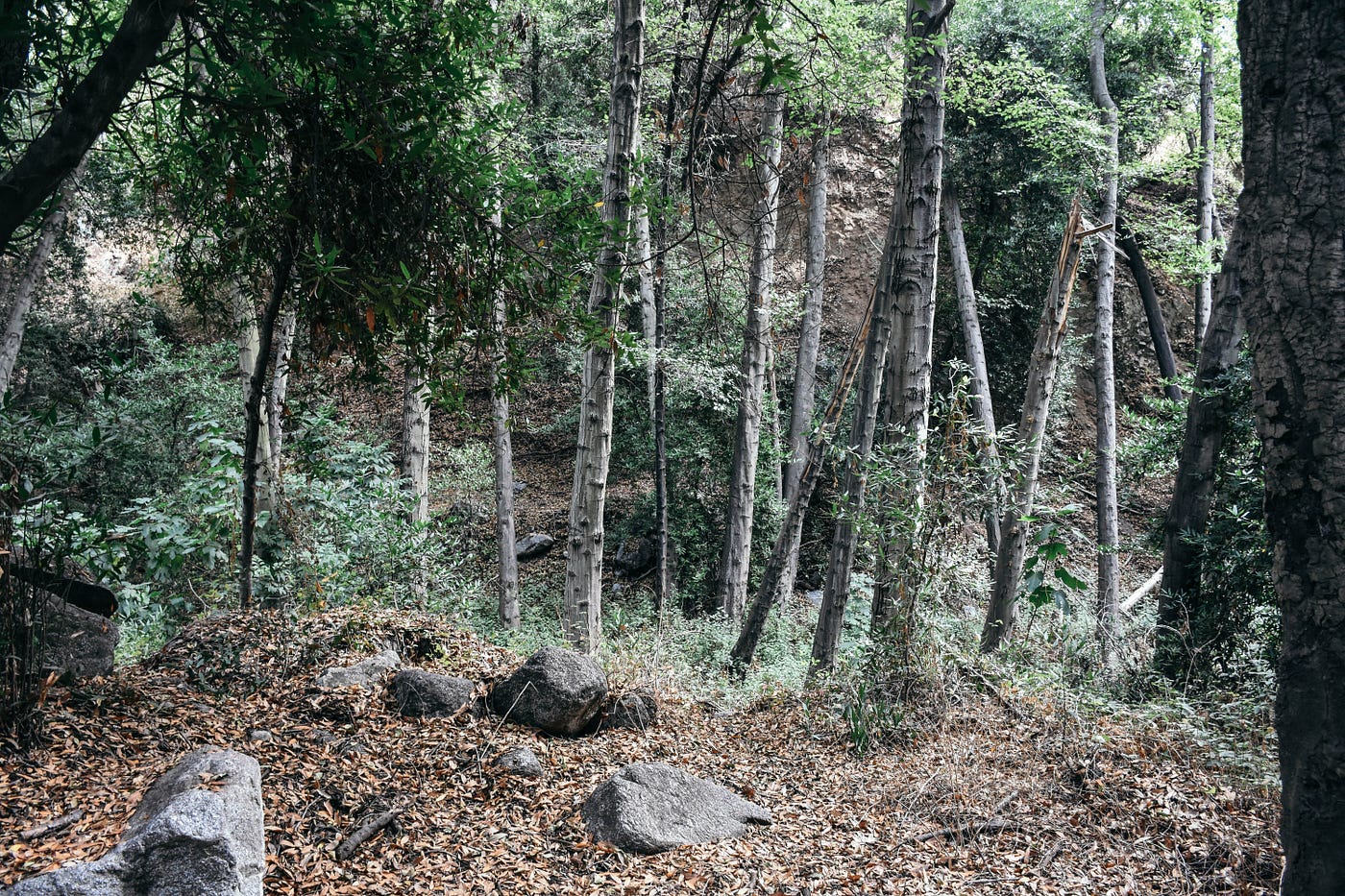
“For me there’s a sense of belonging here,” Page says. “A lot of people don’t know where they belong, but everyone can access that feeling here. The forest does not exclude anyone.”
In America, stopping and smelling the flowers, literally, is not a given for most hikers. Nor is relaxation. While activities like Tai Chi and Zen meditation in public parks are of the norm in places like China and Japan, they are not particularly commonplace in American society.
Page explains that his goal is to help people reengineer their habits so they may replicate the process by themselves.
“If you never come on another walk with me but you walk away knowing how to do it, then I’ve achieved my mission,” he says. “I’m helping you connect with the forest.”
Currently, the association has upwards of 130 guides, though they plan to certify more. The goal is to get the program integrated with park-ranger tours and in hospitals.
“This is a very science-based, low-cost and high-benefit way to promote all the axes of health,” Clifford says, referencing studies that have been done on the practice.
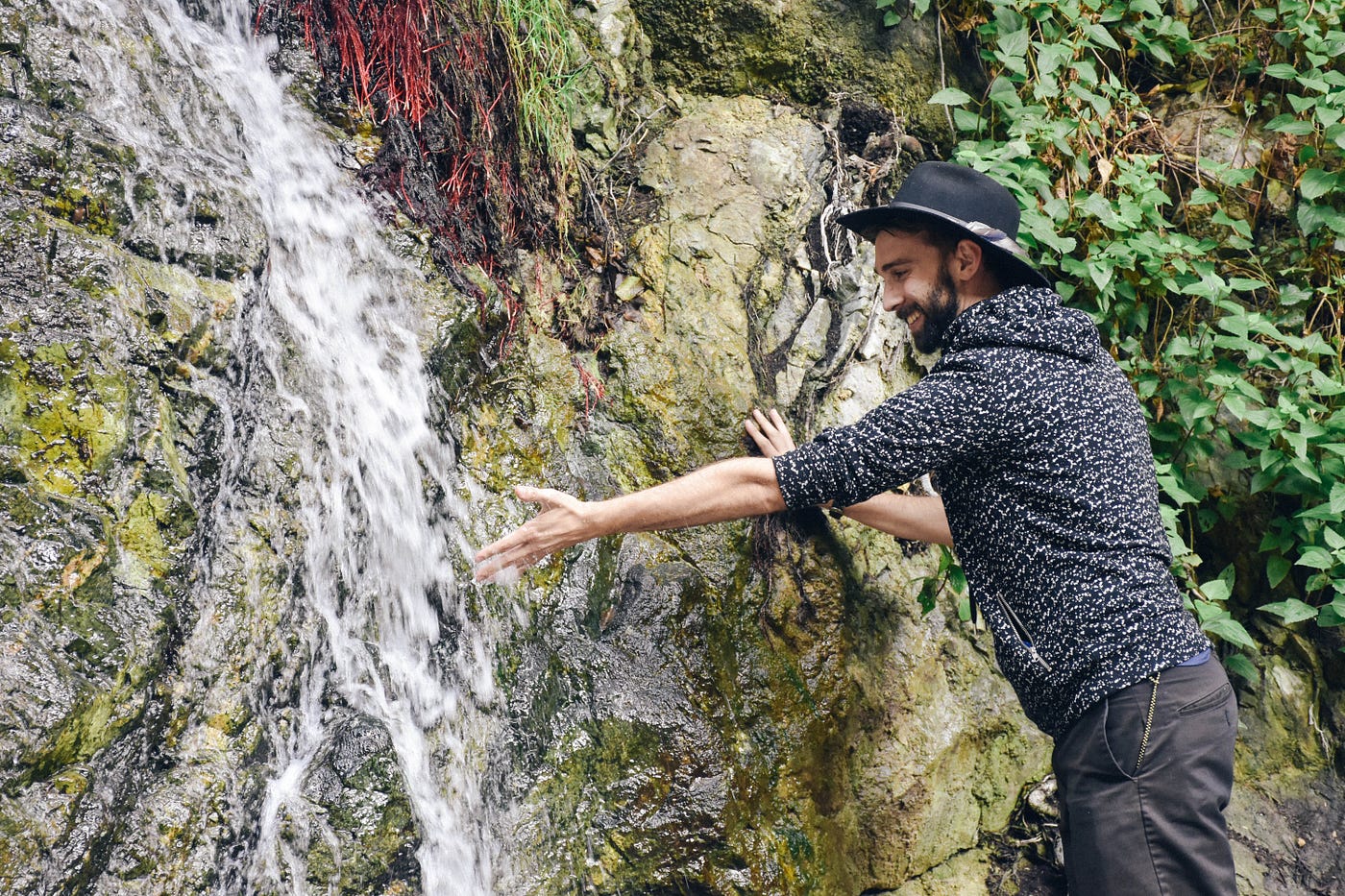
Hours in, Page and I reach the end of the trail at the base of a steady waterfall. Behind us, hikers take out their phones for a snap. They sit there, smile for photos and quickly leave. My immediate reaction is to touch the water and marvel at how it moves. I am calm. And for the first time in months, I forget that I even have a phone.







